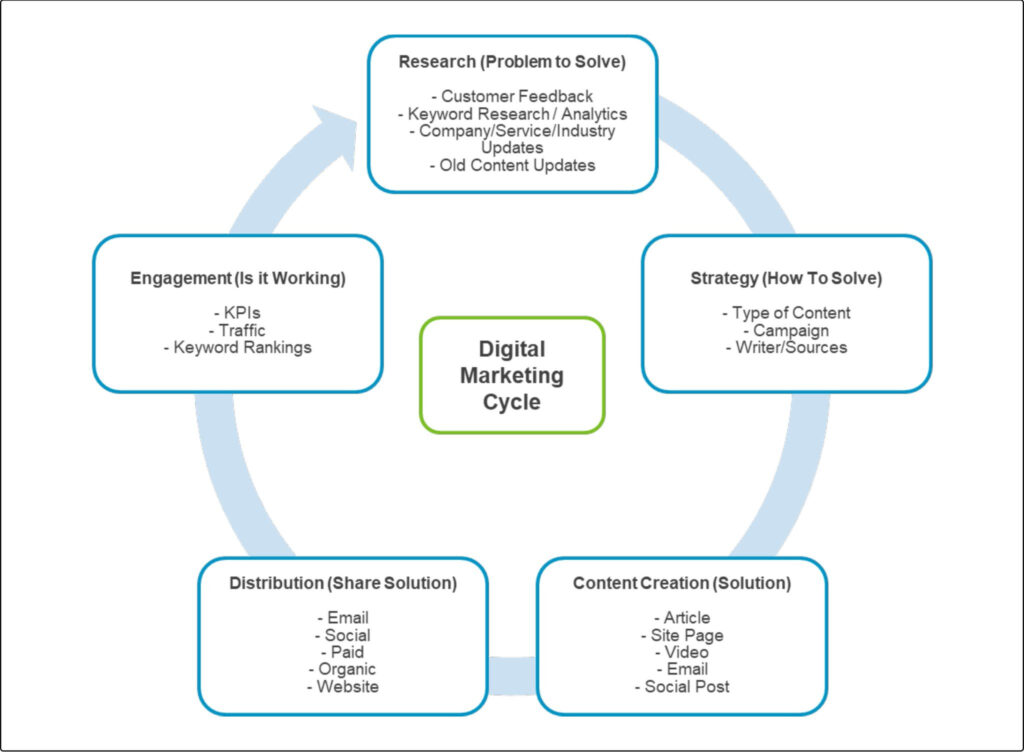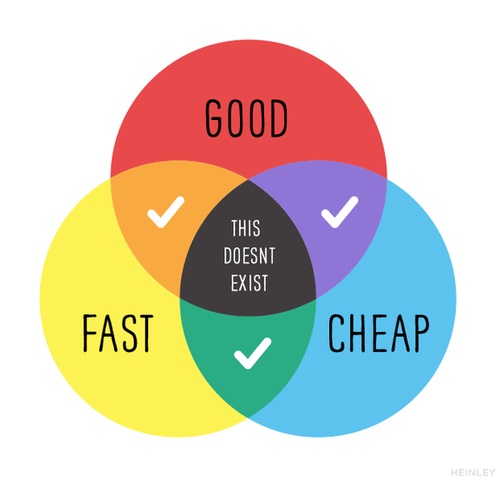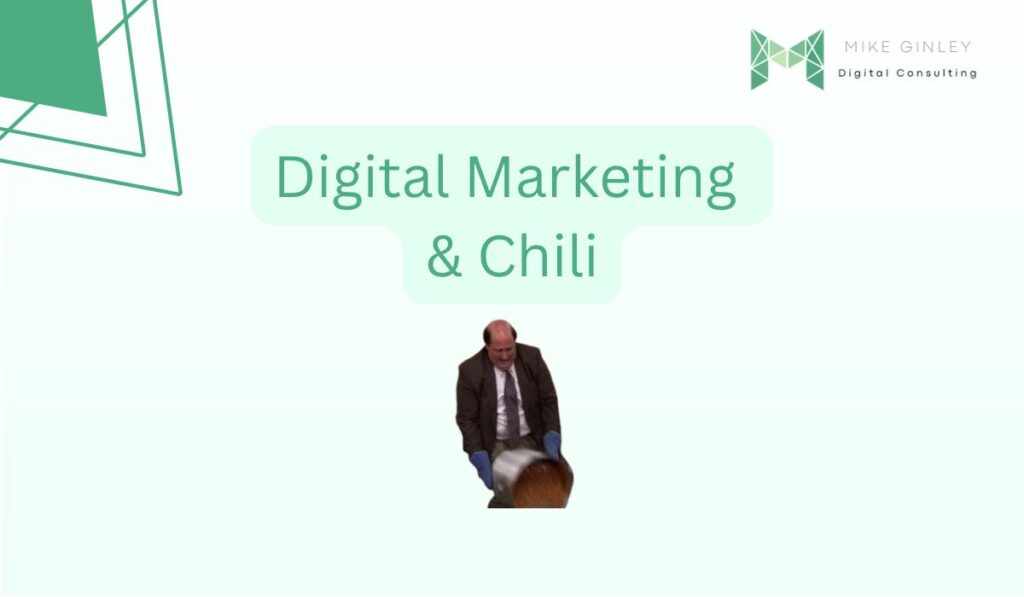TL;DR
- SEO and Digital Marketing are evolving!
- As we always should have, we need to focus on what our customers need.
- See how Mac & Charlie failed to properly market Fight Milk.
“The times they are a changin’ – Bob Dylan” – Timothee Chalamet
The whole world is rapidly changing, but the digital world even more so.
This has been super evident in my day to day work life with moving from SEO & Digital Marketing into Digital Product Marketing Management. The principals are very similar, but it has become a more formalized role forcing collaboration and processes.
Gone of the days of doing keyword research, writing & publishing an article, slapping a CTA on it and watching keyword rankings come in and getting a pat on the back for SEMrush rankigns going up. Now im focused on collaborating with multiple teams to:
- Identify a user problem
- Customer success / sales team
- Document our solution to said problem
- Product/service, content & UX team
- Distribute solution where users are
- Marketing and analytics team
- Monitor, analyze and repeat
- Analytics team
This is a cyclical process, not a do it once and move on process. Many have properly adopted this, but I still see so many focused on traditional digital marketing practices of checking the box and moving on. ‘We have to publish a blog each week’, ‘we have to post on social’, ‘we have to do google ads’. You dont have to do anything, you GET to!

As with all my articles this is likely some chaotic documenting of my thoughts that I think makes sense and can be helpful. Digital Marketing is not going anywhere, just like SEO is not dying. They are changing, and if you refuse to adapt, things will likely go poorly for you.
What is Product &/or Service Marketing Management?
Product and Service Marketing Management to me is the process of strategizing, planning, executing, and monitoring (see above) activities that promote and deliver products and services to meet customer needs, drive demand, and achieve business objectives. It involves a combination of market research, branding, pricing, advertising, distribution, and customer engagement.
See that there is no specific mention of digital marketing channels. That is because not every channel works for every product/service. Those are byproducts of the PMM or SMM strategy. If you focus on the channels before you deeply think about the steps above, you’re going to have a bad time.
A product Product &/or Service Marketing Manager is the quarterback (cheesy business analogy) of all the teams involved with a product/service. They are
- Getting direction from the coach – Strategy
- Getting everyone lined up – Collaborate
- Running the play – Executing
- Audibling for issues that come up – Problem solving
- Scoring (or not) – Success measurement
- Sitting on the bench looking at the tablet – Reviewing and adjusting
The quarterback is not in charge of executing every aspect for the offense. Just like the PMM is not in charge of executing every aspect of marketing. They have a hand in every play/campaign from start to finish. H/t Shelby for the signoff!
You should know your customer. Where are they? What do they want? What do you offer?
Take the answers to those questions, and you have your PMM/SMM strategy.
Traditional Digital Marketing & How PMM Would Fix It
Some of the best and worst product marketing managers of all time – Charlie & Mac!

Fight Milk, the “alcoholic, dairy-based protein drink for bodyguards, by bodyguards”.
1. Product Ideation & Development – Identify User Problem
- Sunny style: Mac and Charlie come up with Fight Milk without considering consumer needs, relying instead on their perception of what makes “bodyguards” strong and cool. The formula includes milk, crow eggs, and vodka—a mix with no nutritional value or appeal.
- My take: A lot of companies do this, they think they know what people want and just run with that. There was no real research to identify gaps, what the customers problems were and how likely they were able to solve their problem. If they took time to understand the problem their customers are facing, they will start to understand the solution they need to create and how to market it. They say ‘they’re all about the product’, but really you need to be all about the customer.
2. Market Strategy – Document Solution To Problem
- Sunny style: Mac & Charlie brands Fight Milk as a hyper-masculine, strength-boosting beverage by associating it with the image of crows and “bodyguard culture.” The logo is a crow flexing, and they market it with aggressive ‘kawwing’. Fight Milk is promoted using chaotic, low-budget ads featuring Mac and Charlie shirtless, flexing, and guzzling the product. Their tagline, “Crows strengthen your body!”. In their head, they are crushing it!
- My take: Brand is becoming the one of the most important aspects in the new AI/LLM world of search. Mac and Charlie thought their tone was what people wanted in health releated content (which is crazy), and did zero research/outreach to validate that. They had no muscle flyers explaining the product, they specifically called out ‘no nerds’ which you should probably have for medical related content, no having Frank go on the news to get people all riled up about the product. Ways they have done things in the past that have worked were completely abandoned here for what they thought would move the needle.
3. Audience Targeting & Channel Strategy – Distrubute Solution
- Sunny style: Fight Milk’s target audience is loosely defined as “bodyguards,” but the gang doesn’t perform any research. They assume anyone who wants to be tough will buy it, with no data or segmentation. Fight Milk lacks any formal distribution plan. Mac and Charlie’s “channel” consists of direct sales to bodyguards at the gym and a corporate shareholders meeting, which is both unsustainable and poorly executed.
- My take: Data is everywhere, you just need to know what to do with it. They say their product is for bodyguards, but they end up attracting a bunch of professional MMA fighters. This happened way down the line, but they missed out on a ton of success early on targeting and messaging to the wrong audience. One of my favorite aspects of the show is how they create videos for almost all these schemes. They create their sales video on vhs and somehow that is their marketing channel strategy. They didnt do anything online, no computer viruses sent to their friends, no letters sent to Chase Utley to possibly get a trusted face for the brand.
4. Testing and Iteration – Monitor, Analyze & Repeat
- Sunny style: Mac and Charlie personally consume Fight Milk to “test” it, resulting in immediate vomiting and severe health issues. They interpret this as a sign of the product’s strength, doubling down on its aggressive image. They hear from their customers how much they love a certain aspect of it, but don’t listen.
- My take: They actually did have some success with the product helping MMA fighters cut weight. They could have run with that and been wildly successful. But instead of listening to the customers and the data, they let their ego’s get in the way and try to force the Crotein/muscle side of the product. The product that failed initially.
PMM Takeaway
Fight Milk from ideation to market and beyond shows what not to do in product/service marketing. It emphasizes the importance of:
- Researching the market and target audience to find the problem.
- Building a clear, credible value proposition to solve the problem.
- Prioritizing a strategy to distribute the solution.
- Listening to the feedback both direct and indirect and adjust as needed.
This is not fast, it is not easy and it will not be cheap. It takes time to understand you customers needs and develop a true solution for them. It takes even more time to properly get that solution in front of them. And because this is a cyclical process of constantly iterating, its never really over. But if you want to succeed with product and service marketing, expecially digitally, you will start doing this.




